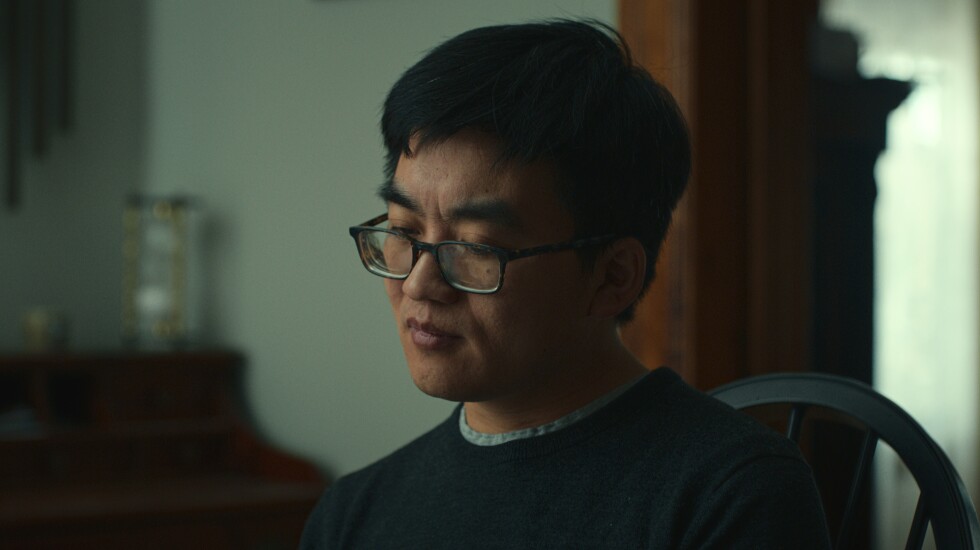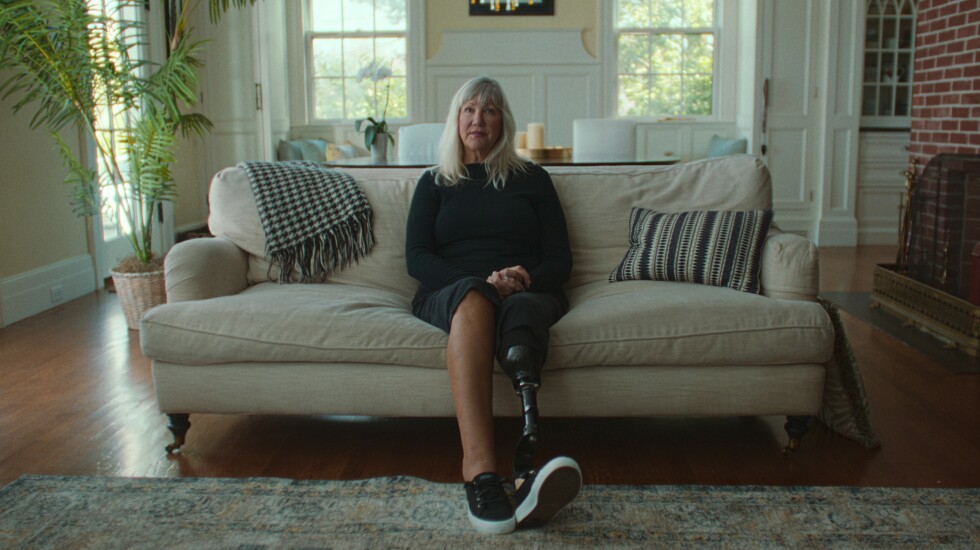Of all the heart-stopping sequences in the profoundly moving, journalistically solid, three-part Netflix documentary “American Manhunt: The Boston Marathon Bombing,” arguably the most indelible of all comes in the second episode, when surveillance camera footage tells the story of Northeastern graduate student Danny Meng, augmented by an interview with Meng in present day.
First, we see grainy video of Boston Marathon bombers Tamerlan and Dzhokhar Tsarnaev carjacking Danny’s black Mercedes Benz SUV with Danny in it and taking off, with the possible intention of driving to New York City to commit another act of terrorism. Next, we see the vehicle pulling up to a gas station in Cambridge, with Dzhokhar going inside the mini mart while Tamerlan remained inside the car with Danny.
“The older one put his gun in the pocket of the door,” recalls Danny. “If I want to run away, if I want to escape from this, it’s probably my last opportunity.”
On surveillance cameras, we see Danny exiting the car, literally running for his life, and entering another gas station across the way, pleading with the cashier to call 911. The brothers speed off in Danny’s SUV—he had memorized the GPS number, which led to authorities soon tracking them down—and Danny’s life is spared.
“[The decision to try to escape was] the most difficult decision I’ve ever made,” says Danny. “I just appreciate that I’m alive.”
Incredible.

Premiering Wednesday, three days before the 10-year anniversary of the attack, “American Manhunt” is perhaps the most comprehensive and valuable recorded history of the Boston Marathon bombings and the events of that week, as the world was gripped by the story and nearly all of Eastern Massachusetts eventually was put on lockdown as local and federal authorities conducted one of the most wide-ranging manhunts in American history.
It was a race to track down the cowardly terrorists who had planted two homemade pressure-cooker bombs near the finish line of the Marathon, killing three people and injuring hundreds of others, and then murdered an officer with the MIT Police Department.
Aside from the judicious use of a handful of tastefully and respectfully rendered re-creations, director Floyd Russ (“Malice at the Palace”) and producer Tiller Russell (“Waco: American Apocalypse”) wisely refrain from any unnecessary technical flourishes as they rely on footage culled from thousands of hours of closed-circuit video, audio from police calls, news archives and compelling interviews with survivors, eyewitnesses, police officers, federal agents and journalists to tell the story. A documentary series such as this one relies heavily on just the right editing touch, and “American Manhunt” is put together in Emmy-level fashion. We know everything that happened and how this will all play out, but it’s still a pulse-pounding, nerve-wracking, sometimes heartbreaking but also inspirational story.
“American Manhunt” begins in the fashion of many true-crime documentaries, in that we see glimpses of interview subjects and hear a comment or two from them as the dramatic music builds the tension—and then we’re plunged into the story, which in this case is told in mostly linear fashion, with graphics counting the hours from the moment of the terrorist attack on April 15, 2013, through the death of Tamerlan and the capture of Dzhokhar four days later.
The first person we hear from is the soft-spoken former Boston Police Department Supt. Billy Evans, who has run 59 marathons himself, including the Boston Marathon that day. “It’s like the rite of spring,” says Evans of the marathon. “Everybody looks forward to Patriots Day,” a local holiday in Boston. Echoes Boston EMT Janell Jimenez: “It’s like a big block party.”
We see raw footage of the first bomb going off, then the second bomb, as hundreds of runners and spectators scramble to safety. (Consider that this was 2013, a dozen years after 9/11. Apple had introduced the first iPhone that could record video a few years earlier, and surveillance cameras had become much more common. Thus, untold numbers of still photos, and thousands of hours of video.)
Among the valuable voices sharing their experiences: Ed Davis, who was the Boston police commissioner; Phillip Martin, an investigative reporter; Rick Deslauries, Special Agent in Charge for the FBI, and Kevin Swindon, head of the Cyber Division in the Boston FBI office. We’re walked through the process of the suspects being identified, and hear of the conflict between Davis, who believed photos of the brothers at the bombing scene should be released immediately, and most of the feds, who thought that would be a mistake. (The photos were released only after authorities became aware of a leak to the media.)

Most compelling are the stories of the law enforcement officers who risked their lives to take down the terrorists—and the runners and spectators who survived. Just before injured spectator Karen McWatters was taken to the hospital, someone put a phone in her pocket and said, “Miss, here’s your phone.” The phone actually belonged to Krystle Campbell, who was killed in the bombings, leading to an unimaginable situation in which Krystle’s family thought she was alive, and Karen’s loved ones thought she was gone (“I thought Karen was dead, no doubt in my mind,” says her now-husband Kevin), before it was straightened out.
This is but one of many, many memorable and sometimes gut-wrenching memories shared by survivors. “American Manhunt” dutifully provides some background on the terrorists, but never wavers in its mission to tell the stories of the heroes of that week.







